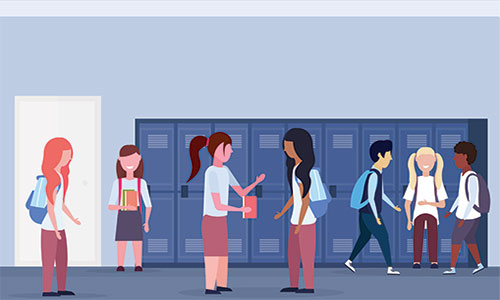New research released last week shows while most students report feeling safe in school, many see the need for additional mental health support.
The report, Creating Safe Schools: Examining Student Perceptions of Their Physical Safety at School, is based on findings gathered in a survey of 10th- through 12th-grade students who took the ACT test in October 2018. Approximately 16,000 students completed the optional survey that was sent to them following the completion of the exam.
The survey focused on three main topics: school climate, current safety measures and preferred additional safety measures. Based on the findings, the report also provided recommendations on how to improve school safety. Below is a summary of the report. The full report can be read here.
School Climate
An overwhelming majority of students (91%) somewhat agreed, agreed or strongly agreed they feel safe at school. Another 97% reported feeling safe traveling between home and school and 90% reported feeling welcomed at school. All of the climate-related questions and responses can be seen in the chart below.
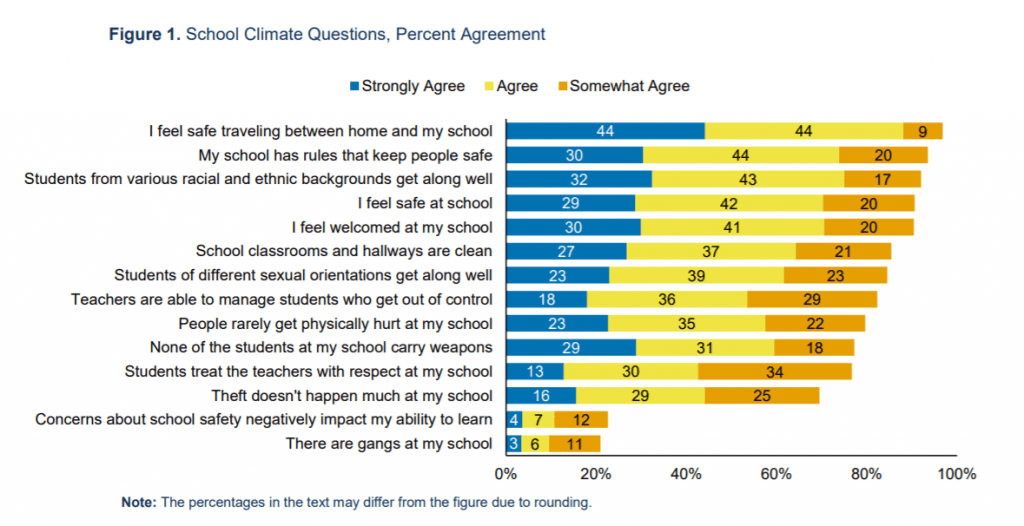
Also notable is that 23% somewhat agreed, agreed or strongly agreed their concerns about school safety negatively impact their ability to learn.
Demographically, White and male students were slightly more likely to report feeling safe than female, Black or Hispanic students. Safety also varied based on the size of the school — students at smaller schools reported feeling safer than students at larger schools.
Current Safety Measures
Students were also asked what specific types of security measures (cameras, school security staff, emergency plan, etc.) were implemented at their school. The top two most identified measures were indoor cameras (84%) and outdoor cameras (71%). An explained emergency plan, locked building during school hours and school security staff tied for third at 65% each.
Students in rural schools were more likely than students in urban schools to report their school was locked during school hours (69% vs. 60%). Students in small schools were also more likely to report this than students in large schools (67% vs. 56%).
Additionally, students in suburban (77%) and urban schools (74%) were more likely than students in rural schools (51%) to report their school had security staff. Similarly, students in large schools were significantly more likely to report this than students in small schools (88% vs. 36%). Minority students were also more likely than their White peers to attend schools with school security staff.
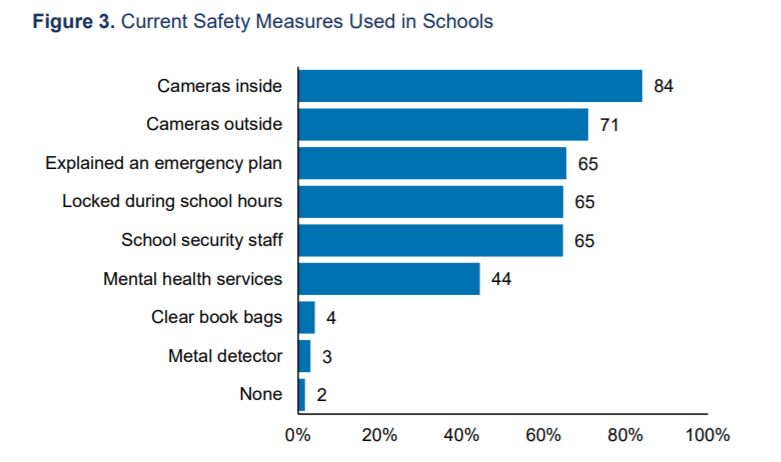
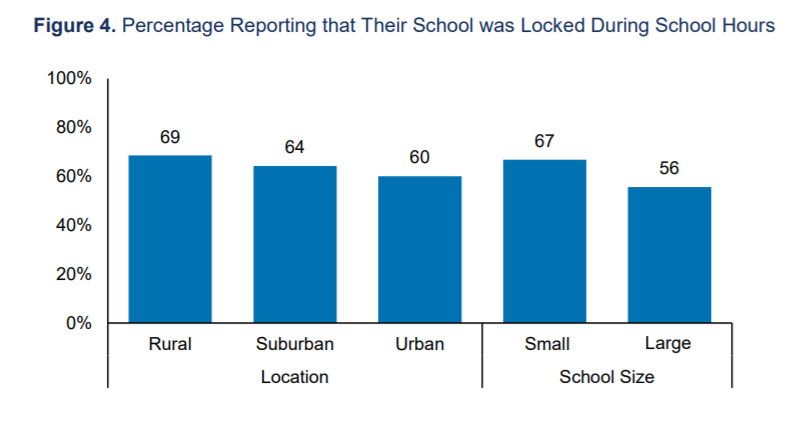
The survey also asked if schools provided mental health support to students who needed it. Large schools (54%) were more likely than small schools (38%) to report available mental health services. Suburban schools were also the most likely to provide mental health services (50%) compared to urban (45%) and rural (41%).
Overall, White students are also more likely to attend schools that lock their doors during school hours (71%) and provide mental health support (47%) than either Black students (52% locked doors and 35% mental health) or Hispanic students (56% and 40%).
The detailed chart below shows a comparison of schools that have locked doors, security staff and mental health services by both race/ethnicity and family income.

Preferred Additional Safety Measures
The survey further asked students what measures could be taken to make them feel safer in school. Providing or increasing mental health services was the most commonly noted safety measure (38%), followed by hiring or adding security staff (36%) and for the school to develop or clarify an emergency plan (30%).
Students were also asked to specify in their own words any additional support the school should provide to make them feel safer. More than 800 students provided open-ended responses. The most common and notable suggestions included:
- Hiring new staff or training existing staff on how to identify and address student mental health challenges
- Stronger doors
- Requiring the use of identification badges to enter the school
- Every classroom be equipped with easy access to a fire extinguisher to use as a weapon against an intruder
Lastly, students were asked about their views on allowing teachers or staff to receive special training for carrying guns in school. Overall, 46% were opposed, 34% were in favor and 19% were neutral. Most notably, students in large schools were more likely than students in small schools to oppose the idea (60% vs. 36%); students in urban schools were more likely than students in rural schools to oppose the idea (58% vs. 35%); minority students were more likely to oppose than White students (54% Hispanic, 66% Black, 57% Asian and 39% White); and female students were more likely to oppose than male students (54% vs. 35%).
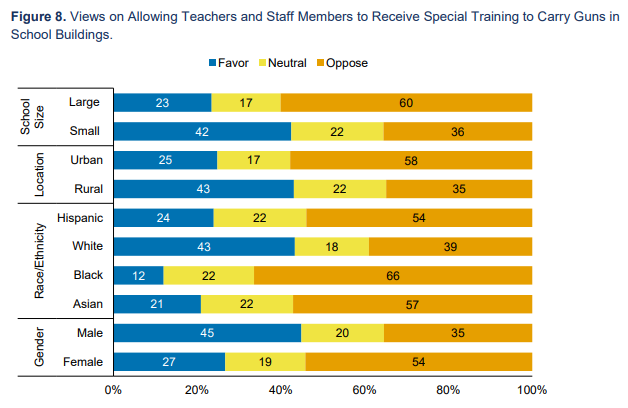
Recommendations
The report concludes by offering the following recommendations for students to feel safer:
- Federal and state funding should be provided to expand, and promote the availability of, school mental health services.
- Schools need funding not only to ensure that all students have access to mental health services but to publicize the availability of the services.
- Additional research is needed to examine the effectiveness and unintended consequences of safety measures.
- There is a need to study the effectiveness of potential school safety measures to ensure they are, in fact, effective, and to evaluate the potential of unintended consequences of implementation.
- Policymakers must ensure that their students’ perspectives are taken into account when considering which school safety measures to implement.
- The findings suggest there cannot be a one-size-fits-all approach to the implementation of school safety measures; policymakers must gather and use student input on the possible negative consequences of particular measures.
Here are some additional articles which include findings on student mental health and school safety measures:
- More Kids Seeking Help for Mental Health at ERs, Research Shows
- New Study: Significant Rise in Suicide Attempts Among Kids, Teens
- ACLU: How the Lack of School Mental Health Staff Is Harming Students
- How Many K-12 Schools Have Security Cameras, Controlled Access?
- Study: Interior Security Cameras on Campus Make Students Feel Less Safe

